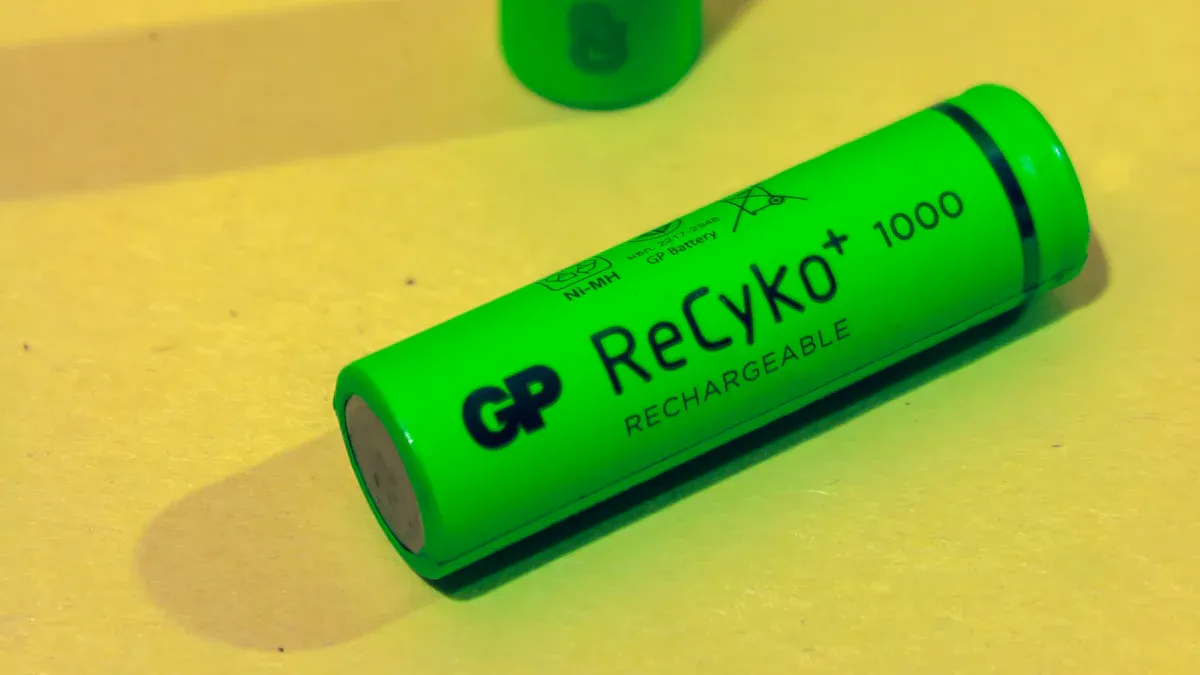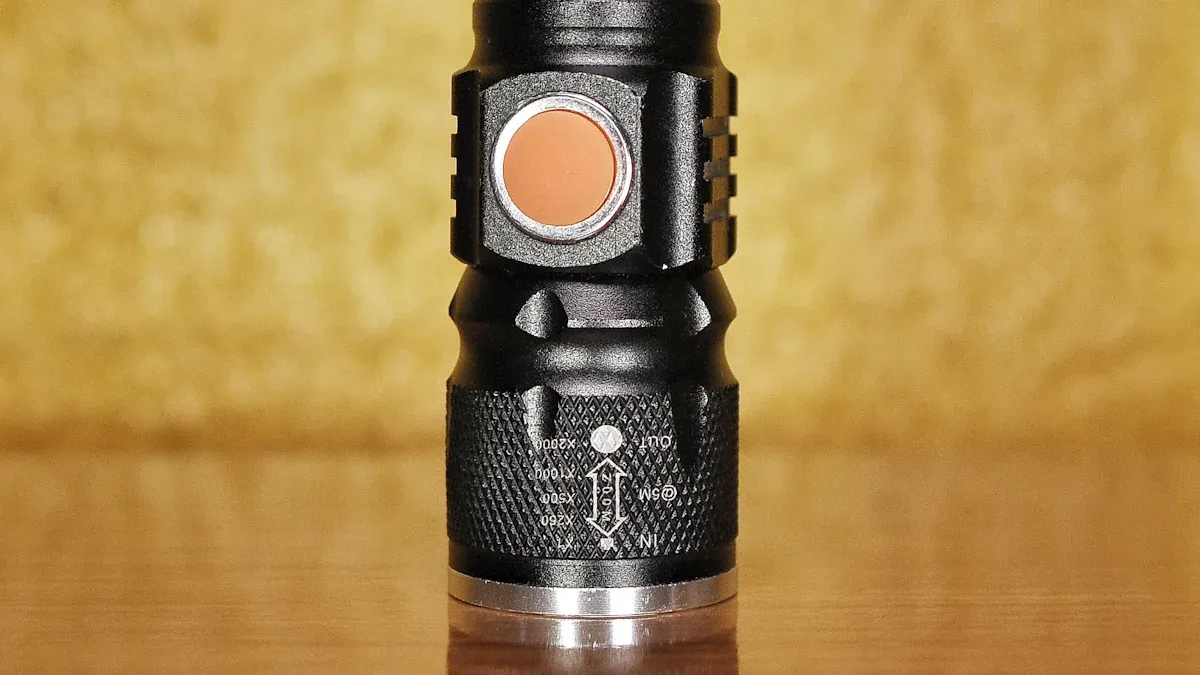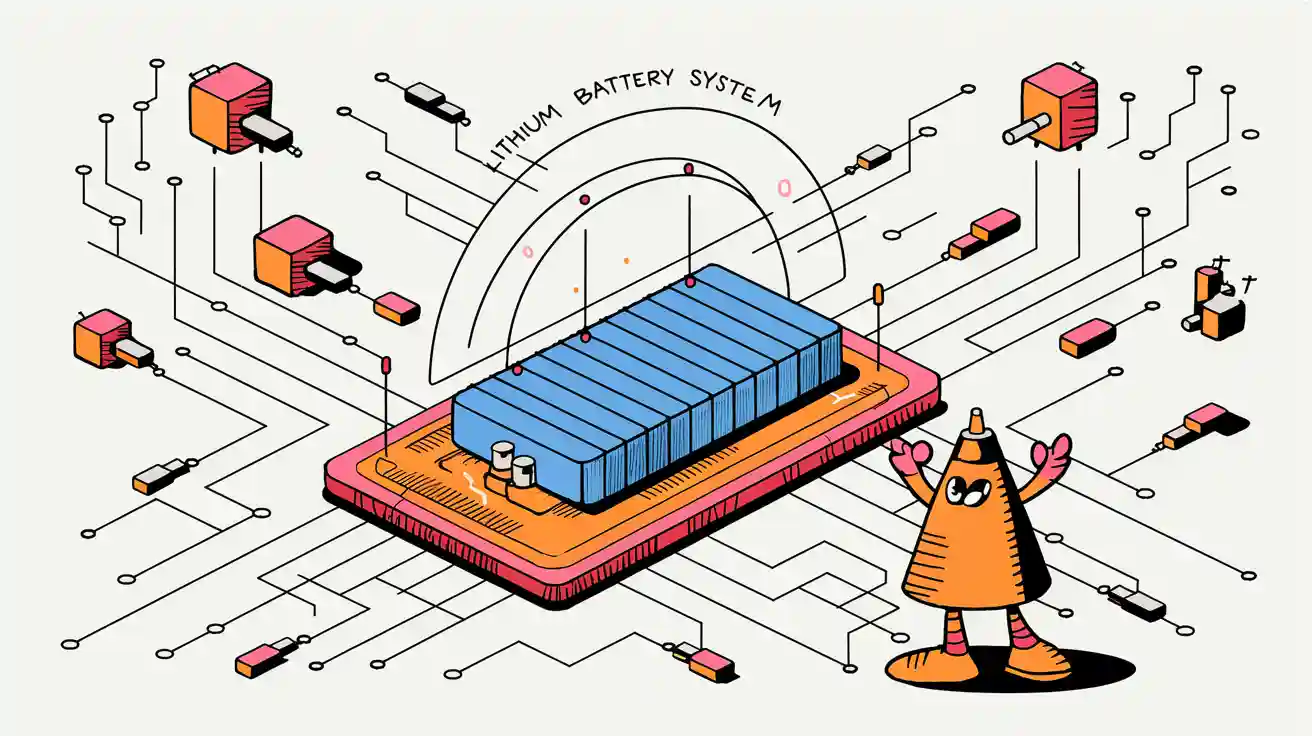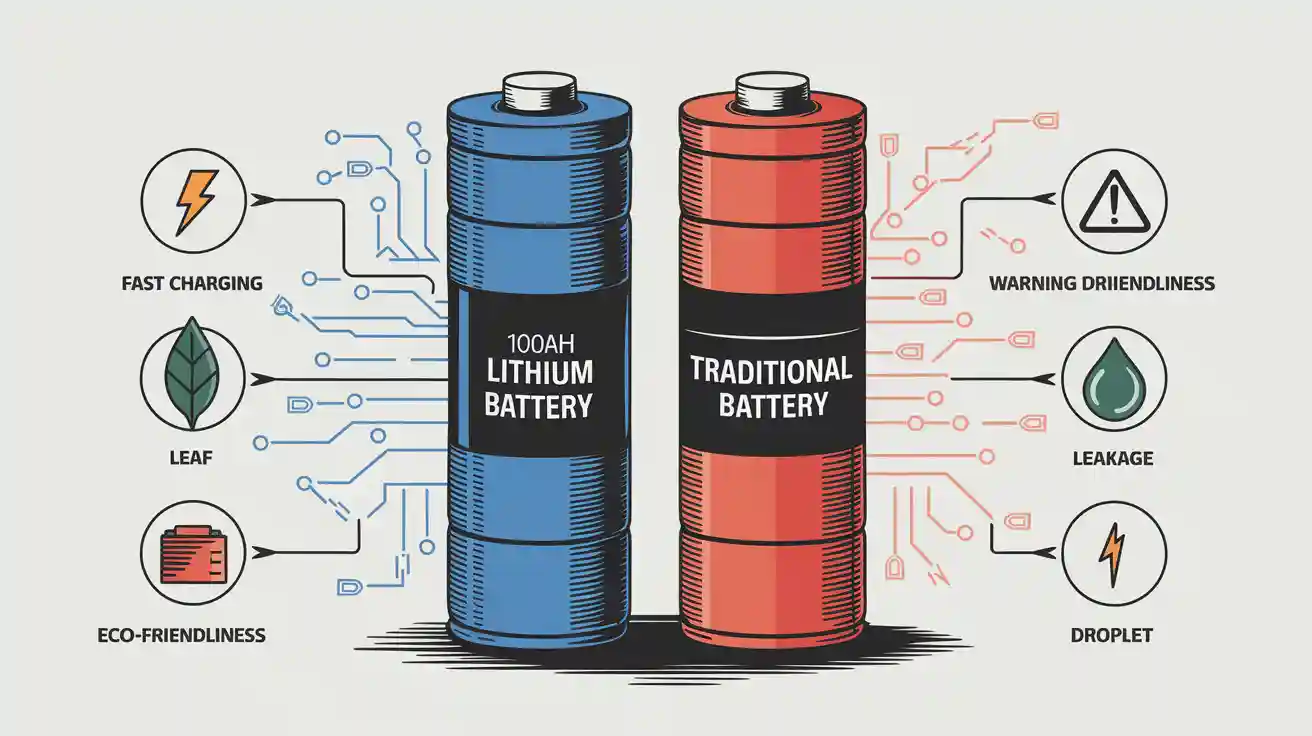Contents

Choosing the right battery power supply for LED light batteries is critical for ensuring optimal performance and longevity. The correct batteries prevent inefficiencies and safety risks while supporting the energy needs of LED lights. Key factors include understanding the types of LED light batteries, ensuring voltage compatibility, and evaluating runtime to match your specific LED light requirements.
Key Takeaways
Pick the correct battery type for your LED lights. Alkaline batteries are good for low power, while lithium batteries are better for high power.
Check that the battery voltage matches your LED lights. Wrong voltages can waste energy or harm your LED lights.
Use rechargeable lithium batteries if you use them often. They cost less over time and create less trash than disposable ones.
Part 1: Types of Batteries Compatible with LED Lights

1.1 Common Battery Types for LED Lights
When selecting a battery for LED lights, understanding the available options is crucial. Different types of batteries cater to various applications, offering unique advantages based on their chemistry and design. Here are some of the most commonly used battery types:
Alkaline Batteries: Widely available and cost-effective, these are ideal for low-power LED applications like remote controls or flashlights.
Nickel-Metal Hydride (NiMH) Batteries: Known for their higher energy density compared to alkaline batteries, NiMH batteries are often used in consumer electronics and battery-operated LED lights. They come in small sizes for portable devices and larger sizes for tools and lighting systems.
Lithium Batteries: These are the go-to choice for high-performance LED lights due to their superior energy density, lightweight design, and long lifespan. They are commonly used in LED strip lights and other demanding applications.
Tip: For industrial or commercial LED lighting, lithium batteries provide the best balance of performance and durability.
1.2 Rechargeable vs. Non-Rechargeable Options
Choosing between rechargeable and non-rechargeable batteries depends on your specific needs, including usage frequency and cost considerations. The table below highlights the key differences:
Feature | Rechargeable Batteries | Non-Rechargeable Batteries |
|---|---|---|
Cost of Production | More expensive initially, but economical over time due to multiple uses | Cheaper initially, but only usable once |
Composition | Made from lithium-ion, nickel-metal hydride, or nickel-cadmium | Made from alkaline, zinc-carbon, and coal dust |
Usage and Application | Ideal for frequent use; some types have memory effect | Best for infrequent use; long shelf life |
Rechargeable batteries, such as lithium-ion or NiMH, are perfect for applications requiring consistent power, like LED strip lights. Non-rechargeable options, like alkaline batteries, work well for emergency or backup lighting due to their long shelf life.
Note: If you’re unsure how to connect LED lights to a power supply, consult a professional to ensure compatibility and safety.
1.3 Lithium Battery for LED Lights and Other Specialized Options
Lithium batteries are a top choice for LED lighting due to their high energy density, lightweight construction, and extended runtime. They are available in various chemistries, each suited for specific applications:
NMC Lithium battery: Offers excellent energy density (160~270Wh/Kg) and is widely used in portable LED lights and rechargeable systems.
Lithium Iron Phosphate (LiFePO4): Known for its stability and long cycle life, this type is ideal for industrial LED lighting. It provides a platform voltage of 3.2V, energy density of 100–180 Wh/kg, and a cycle life of 2,000–5,000 cycles.
Lithium Cobalt Oxide (LCO): With a platform voltage of 3.7V and energy density of 180–230 Wh/kg, LCO batteries are suitable for high-performance LED applications.
For specialized applications, such as outdoor or industrial lighting, lithium batteries outperform other types due to their reliability and efficiency. To calculate battery size for your LED lights, consider the voltage and capacity requirements of your setup.
For custom battery solutions tailored to your LED lighting needs, explore Large Power’s offerings.
Part 2: Key Factors to Consider When Choosing the Right Battery Power Supply
2.1 Voltage and Power Compatibility
Ensuring voltage compatibility is critical when selecting a battery for LED lights. LED lights operate within specific voltage ranges, and mismatched power supplies can lead to inefficiencies or damage. For instance, a 12V LED strip requires a battery that matches this voltage. Using a lithium battery pack is often ideal because it provides stable voltage output, ensuring consistent performance.
You should also consider the power requirements of your LED lights. High-power LEDs demand batteries with sufficient capacity and discharge rates. For example, industrial LED systems often pair with LiFePO4 lithium batteries due to their platform voltage of 3.2V and long cycle life of 2,000–5,000 cycles.
Tip: Always calculate battery size based on the voltage and current requirements of your LED setup to avoid overloading or underpowering your system.
2.2 Battery Capacity and Runtime for LED Applications
Battery capacity determines how long your LED lights can operate before recharging or replacement. Measured in milliampere-hours (mAh) or watt-hours (Wh), capacity directly impacts runtime. For example, a 3,000mAh lithium battery can power a 3W LED for approximately 10 hours.
For battery-powered LED lights used in commercial or industrial settings, higher capacity batteries like NMC lithium batteries are recommended. These batteries offer energy densities of 160–270 Wh/kg, making them suitable for applications requiring extended runtimes.
Pro Tip: Opt for rechargeable lithium batteries for frequent use. They provide long-term cost savings and reduce waste compared to disposable options.
2.3 Efficiency and Energy Density in Battery Operated LED Lights
Efficiency and energy density are key factors in battery-operated LEDs. Lithium batteries, such as LCO or NMC, excel in these areas. LCO batteries, for instance, offer energy densities of 180–230 Wh/kg, ensuring compact designs without compromising performance. This makes them ideal for portable LED lighting solutions.
High energy density also translates to fewer battery replacements, reducing downtime in critical applications. For outdoor or industrial LED systems, LiFePO4 lithium batteries provide a balance of efficiency and durability, with a cycle life of up to 5,000 cycles.
2.4 Environmental Impact and Sustainability of Battery Choices
Sustainability is an increasingly important consideration. Lithium batteries are more environmentally friendly than older chemistries like nickel-cadmium. They contain fewer toxic materials and are recyclable. For example, LiFePO4 batteries are known for their safety and minimal environmental impact.
To further reduce your carbon footprint, consider rechargeable options and proper recycling practices. Learn more about sustainable battery solutions here.
Note: Large Power offers custom battery solutions tailored to your LED lighting needs. Explore your options here.
Part 3: Safety Tips and Best Practices for Using LED Light Batteries

3.1 Proper Handling and Storage of Battery Packs
Proper handling and storage of battery packs are essential to ensure safety and maintain performance. Mishandling can lead to reduced battery capacity or even safety hazards. Follow these best practices:
Store batteries in a cool, dry place away from direct sunlight or heat sources. High temperatures can degrade lithium batteries and reduce their lifespan.
Use fire-resistant containers for storing large battery packs, especially for industrial applications.
Follow industry standards such as NFPA 855 and UL 1973 for safe storage and installation of battery energy storage systems.
Ensure compliance with local building codes like the International Building Code (IBC) and International Fire Code (IFC) to meet fire safety regulations.
Tip: Always label battery packs clearly to avoid confusion during use or maintenance.
3.2 Avoiding Overcharging and Overdischarging
Overcharging or overdischarging batteries can cause significant damage and safety risks. Overcharging lithium batteries may lead to electrolyte decomposition and thermal runaway, increasing the risk of fires. Overdischarging, on the other hand, can permanently damage the battery’s internal structure.
To prevent these issues:
Use chargers designed specifically for your battery type, such as a 12V rechargeable battery pack for LED lights.
Monitor charging cycles to avoid exceeding the recommended voltage range.
Install battery management systems (BMS) for battery-powered LED lights to regulate charging and discharging processes.
Note: Rechargeable lithium batteries often include built-in protection circuits to minimize these risks.
3.3 Maintenance Tips for Prolonging the Life of Lithium Batteries for LED Lights
Regular maintenance can extend the lifespan of lithium batteries used in LED lights. Here are some practical tips:
Clean battery terminals periodically to ensure proper electrical contact.
Avoid exposing battery-operated LEDs to extreme temperatures, as this can reduce battery capacity.
Recharge batteries before they are completely drained to prevent overdischarge.
For rechargeable LED strip lights, use chargers with automatic shutoff features to prevent overcharging.
Pro Tip: Calculate battery size accurately to match the power requirements of your LED lights. This ensures optimal performance and reduces unnecessary strain on the battery.
By following these safety tips and best practices, you can maximize the efficiency and longevity of your battery-powered LED lights while minimizing risks. For custom battery solutions tailored to your specific needs, consult with Large Power.
Choosing the right battery power supply for your LED lights is essential for achieving optimal performance, efficiency, and safety. Proper battery selection can reduce power consumption by up to 75.65%, significantly enhancing energy savings and sustainability.
Key factors to consider include voltage compatibility, runtime, and energy density. For example, lithium batteries like LiFePO4 or NMC offer superior efficiency and long cycle life, making them ideal for industrial LED applications. The table below highlights the impact of proper battery choices:
Metric | Value |
|---|---|
Power consumption reduction | 75.65% |
Comparison to standard lamps | Significant energy savings |
Contribution to sustainability | Enhanced environmental impact |
For B2B customers, consulting with battery manufacturers or using professional tools to calculate battery size ensures compatibility and reliability. Explore custom battery solutions tailored to your LED lighting needs with Large Power.
FAQ
1. How do I calculate the battery size for my LED lights?
To calculate battery size, multiply the LED’s wattage by the desired runtime (hours). Divide the result by the battery voltage. Consult Large Power for tailored solutions.
2. Are LiFePO4 batteries suitable for industrial LED lighting?
Yes, LiFePO4 batteries are ideal for industrial LED systems. They offer a platform voltage of 3.2V, energy density of 100–180 Wh/kg, and up to 5,000 cycles.
3. How can I ensure my LED light batteries are sustainable?
Choose rechargeable lithium batteries like NMC or LiFePO4. Recycle used batteries responsibly.
Tip: For custom battery solutions, consult Large Power to optimize performance and sustainability.





